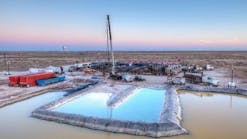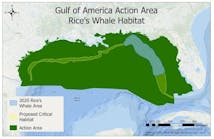| EDITOR'S NOTE: The following interview with Dr. Juan José Suárez Coppel, director-general of Petroleos Mexicanos (PEMEX), was conducted in Mexico by the editorial staff of Focus Reports exclusively for Oil & Gas Financial Journal. Suárez Coppel, an economist, succeeded Jesus Reyes Heroles as chief executive of the state-owned oil monopoly in September 2009. He previously served as CFO of PEMEX before leaving the company in 2006. |
OIL & GAS FINANCIAL JOURNAL: In 2009, you were appointed head of PEMEX, a company surrounded by many pressures and influences (politics, fiscal, trade unions). Was this somewhat like a poisonous gift?
Photo courtesy of PEMEX
DR. JUAN JOSÉ SUÁREZ COPPEL: I previously spent six years – from 2000 to 2006 – working for PEMEX. I therefore knew what I was getting into when I had the privilege of being asked to work in this position. I have worked in both the private and public sectors and even if this job can be frustrating, it is the most interesting and rewarding job I have ever had.
OGFJ: What have been your priorities over the course of the past two years?
SUÁREZ COPPEL: When I arrived at PEMEX, we had experienced several years of steep decline in oil production. As such, the main priority was to make sure we were making the right investments and making the right decisions to stop this trend. We also pursued our exploration efforts in order to reach our target of a 100% replacement ratio by 2012. The other part of our strategy was to turn around the situation in downstream. In past years petrochemicals and refining activities were in deficit. Hence we made the decision to return to profits. Our last point was to operate operational changes in order to become a more flexible, efficient, and agile organization.
OGFJ: What is the overall line and target for increasing E&P?
SUÁREZ COPPEL: PEMEX today produces 1.4 billion barrels in both oil and gas liquids. Our development costs are about $15 per barrel and the refining cost is $1.5 to $2.5 per barrel. We need to invest between $15 to $18 per barrel to maintain these levels of production. Therefore, we need to invest $22 to 24 billion every year to maintain our level of production.
When it comes to crude, we produce close to 2.6 million barrels per day, and I believe that by the end of this year, we will be producing steadily 2.6 million. Our plan is to reach 2.7 million bpd by the end of 2012 and hit 3 million bpd by 2017-2018. This will of course require significant investments, and we therefore need to invest in addition to these $22 to $24 billion planned. Besides we have a lot of opportunities to increase our gas output. In the past, a lack of investment drove to the decline in non-associated gas production in the Veracruz and Burgos basins. But today we have discovered very significant gas fields in deep water. We expect production to start by 2015.
I believe we also have opportunities in our shale gas potential. We are optimistic about all these developments, and we will continue making efforts to increase gas production as Mexico needs this gas.
This is the basis of our development strategy. As every company involved in extraction we need to think about the future now. This is why we are choosing to invest heavily in E&P.
OGFJ: PEMEX introduced incentive contracts. What has been the reaction to these contracts and what novelty do they bring?
SUÁREZ COPPEL: Our constitution does not allow us to enter into joint ventures. PEMEX was working on penalty bases without incentives. And that now this has changed. In 2008, within the frame of the energy reforms, we got more flexibility in contracting. This flexibility allows us to contract private operators for our oil and gas fields.
The incentive contracts have two main components: the first is a "cost recovery" factor while the second is a "pay per barrel" factor. These two elements have different effects on incentives and it is important to keep both, and play around with them.
Unfortunately, we still suffer from a lack of competitiveness regarding fiscal terms. Given that we have been trying to have these contracts as close to non-recourse as we possibly can, this often creates a situation in which the cash-flows make the recovering of these contracts very tough.
Having said that, deepwater will happen. We started investing considerably in deepwater exploration in 2004, and back then, we acknowledged this wasn't going to happen overnight. But I am glad to say that we are now going to start developing our first deepwater field – Lakach – and we are confident production will begin in 2015. We are very excited about Mexico's deepwater potential.
OGFJ: The investment plan announced by PEMEX mainly focuses on E&P. Are you neglecting the refining and petrochemical infrastructures?
SUÁREZ COPPEL: Everything else might look dwarfed but this is a wrong perception. We are investing what we need in refineries, putting very important investments in the next few years. We are building new processing capacities in Minatitlán refinery, and we are revamping Tula. In general, we are putting a lot of money into maintenance and bringing up to speed up our overall refining system. Furthermore, we are putting more money into petrochemicals, as there are a lot of opportunities. North America has the cheapest natural gas, and we absolutely need to take advantage of this situation.
OGFJ: Despite the turnaround in oil output decline last year, PEMEX once again generated losses. How do you explain this situation?
SUÁREZ COPPEL: This is more a result of both our fiscal and social obligations than of our operations. PEMEX is responsible for the payment of LPG subsidies – close to $7 billion per year. The prices that we receive for the products we sell in Mexico (gasoline, diesel, and other) are calculated with the logic of international prices plus logistics to protect Mexican consumers from our monopoly. That logistical adjustment has to be approved by our tax collector. This costs us another $5 billion to $6 billion every year.
In addition, one third of our payroll goes to pensioners – that is to say all the people that have worked with us throughout history, which amounts to 70,000 people, and which cost us another $3 billion to $4 billion annually. This represents more of a debt than an operating cost. These cost caps, which we cannot deduct from our taxes, make us pay about $6 billion more than what we would pay with a regional tax scheme.
If you add all these elements together, of course losses will be big. For instance, last year we lost about $4.5 billion. But if you add all this up, with the adjusted P&L, we actually made about $15 billion. We pay a lot of dividends to our shareholders – a good $18 billion of dividends on top of the taxes we pay.
Having said that, certainly there are a lot of opportunities to increase our profitability and that is what we see as one of our main responsibilities – getting profitability downstream and ensuring profitability and cost-reduction across the board.
From my viewpoint, too many people have a say in how PEMEX is run. When there are too many cooks in the kitchen, no one is responsible for how the broth tastes. The big difference from how we run PEMEX and how other NOCs and oil companies are run is that in the latter, you have one cook. You then have to make sure he has the ingredients that he claims he needs, and then if the broth is not good enough, after a couple of trials, you get a new cook.
Most certainly we need to run PEMEX more as a business entity, as an enterprise, so we can get better results out of the company. Rather than focusing on how to get more taxes from the company, we should concentrate on ensuring that PEMEX has the financial, technical, and human resources to increase Mexico's potential as an oil and gas producer and exporter.
We need to be able to run the company as a company. We do not need a new company; we just need the flexibility to run this company as we should in order to create value for our shareholders.
OGFJ: How do you see the future of PEMEX, and what is the model for the company?
SUÁREZ COPPEL: On the one hand, you have Brazil's Petrobras and Norway's Statoil where the majority of the shares and control over the votes are owned by the government, but they still act as private companies. Generally speaking, the way a company is run should not be affected by who the owner is. One would like the people running the company to create value for shareholders independently of whether they are governments, sovereign wealth funds, or regular individuals. So yes, on the one hand, PEMEX should be like a Petrobras, a big company with the government as the majority shareholder, but a company able to compete with others.
Photo courtesy of PEMEX
Another example is Saudi Aramco, in which the company and the resource are owned by the same entity. The company does its job by maximizing the value of the resource and you do not need special regulatory bodies. At PEMEX there are just too many regulators. There has to be a decision about whether we wish to come closer to the models of Saudi Arabia or Brazil. But that is a political decision. Meanwhile, our job is to run PEMEX as well as we possibly can.
The issue right now is that we have a huge opportunity to increase the value that we can get from the industry by just running PEMEX properly. Regardless of politics, we need to strengthen, develop, and invest in our company.
OGFJ: Thank you very much for your time.
More Oil & Gas Financial Journal Current Issue Articles
More Oil & Gas Financial Journal Archives Issue Articles
View Oil and Gas Articles on PennEnergy.com




